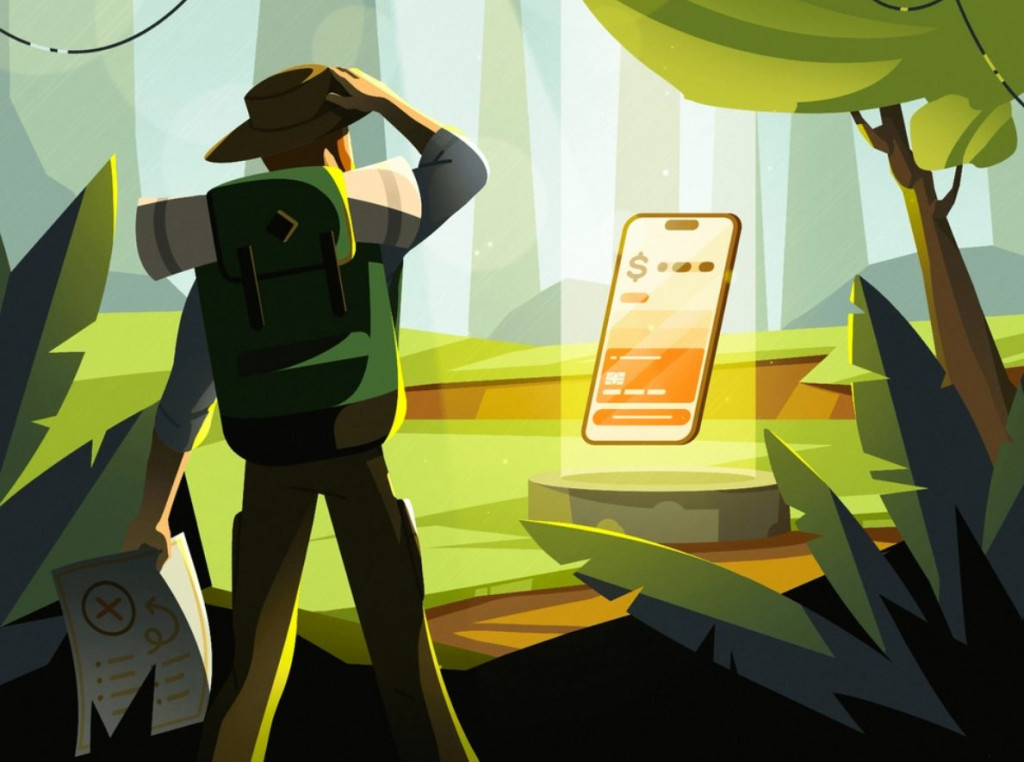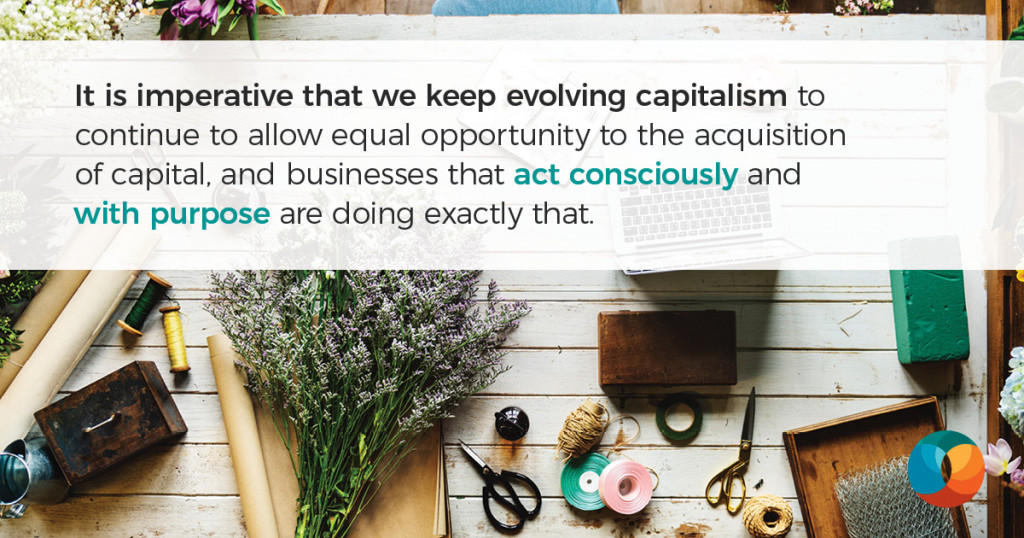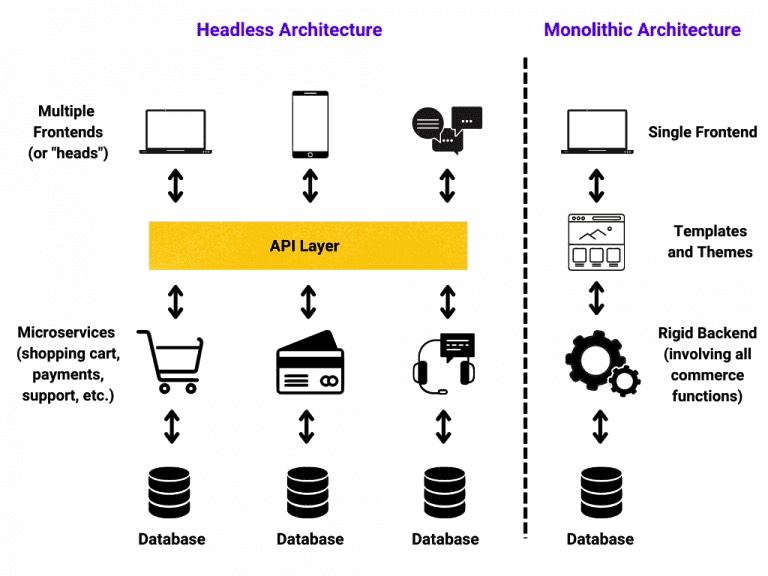The essential peculiarity of the B2B market is that the seller and the buyer are partners. The seller earns by selling goods or services, and the buyer also gets some benefits from buying goods to resell or use in production, and services help improve both business processes. Let’s discover some significant B2B ecommerce trends that shape the future of B2B commerce.

B2B eCommerce trends shaping the industry
B2B eCommerce, or business-to-business electronic commerce, refers to the sale of goods or services between businesses through online platforms. Unlike B2C (business-to-consumer) eCommerce, which targets individual consumers, B2B eCommerce typically involves transactions between manufacturers, wholesalers, and retailers. It serves operations like bulk ordering, custom pricing, and intricate supply chain management.
Here’s the list of the most sought-after trends for the future of B2B e-commerce that will enhance business success if applied appropriately. You will find those at best B2B website design examples — look close and pick the ones you’d want for your business.
Personalized experiences
There is a reason why account-based marketing, characterized by an ultra-custom approach to each client, is winning the B2B ecommerce trends today. Personalization is the key to B2B success. Businesses need to build stronger relationships with their customers and increase conversions. By providing a personalized shopping experience, businesses can make customers feel valued and understood, leading to greater loyalty and repeat sales in the future.
VR presentations
Augmented reality (AI) and virtual reality (VR) can be used in many ways to increase B2B sales. In 2021 and 2022, B2C brands such as Hyundai, Samsung, and Gucci have created virtual reality to enhance the shopping experience. It has been picked up in 2023 by B2B brands, like Cisco hosting a virtual conference and VERYX building a VR model of their conveyor belt machines.
Lead generation enhancement with AI
Artificial intelligence can be widely used to identify potential customers through the analysis of customer behavior and interests. With AI, sales teams will increase their chances of closing successful deals. They let B2B marketers comb through contacts, learn the specifics of the leads’ behavior, tailor the pitch accordingly, schedule meetings and even create the most promising follow-up strategy with AI.
Companies lean into sustainability
As public awareness of climate crisis and other global problems grows, an increasing number of businesses are looking into their sustainability strategies. These objectives are excellent for the environment, but they are also excellent for business. Utilizing environmentally friendly packaging is a basic method to demonstrate sustainability in your company. From there, you are expected to look into offsetting your carbon footprint, shortening supply chains, etc.

Source: ConsciousCapitalism
Organizations like B-Corp and Conscious Capitalists are there to mark the businesses that do best in their efforts to reduce their impact while still increasing their profits.
Selling through third-party online marketplaces
A third-party marketplace, like Amazon Business or Faire, are web-based platforms that connect sellers and buyers, such as wholesale firms and end users, using a variety of features. One of the key benefits of entering marketplaces is access to a whole new set of customers. It’s a great straightforward way for companies to open up new markets for themselves. In addition, marketplaces allow B2B companies to evaluate their competitors, and at the same time expand the range and improve product quality control processes.
Social media selling
B2Bs are picking up marketing strategies that have historically been employed in business-to-consumer (B2C) sales across all industries. Social networks are typically seen as a B2C strategy, however they are increasingly developing a strong B2B presence. It lets you get market insights first-hand and capitalize on them. We are already seeing active B2B social media activity, and by 2026, it’s anticipated that there will be more than $2.9 trillion in e-commerce ventures active on social media.
Approximately 46% of B2B buyers use social media to research potential solutions, 40% to compare options, and 35% to gather information they must have before making a purchase, according to Gartner.
Omnichannel sales
B2B businesses stand a decent possibility of growing transactions and sales by providing customers with different options for buying goods and services. The ability to choose always appeals to customers. In addition to the advantages of raising the average check, omnichannel sales will give you a detailed portrait of your consumer. By being present across several channels, businesses may better understand their audiences and make better decisions.
Going headless
Headless technologies are one of the most powerful automation tools and are definitely among the B2B ecommerce trends. B2B brands can separate the front end and back end of a B2B website using headless commerce architecture. Retailers now have more leeway to create and alter anything they want thanks to this arrangement.

Source: CMSMart
Headless B2B marketplace editions offer comprehensive B2B capability to B2B merchants, streamlining both client and merchant online B2B operations in a better way.
Mobile-first websites
With over half of the online traffic coming from mobile, a responsive mobile website or downloadable mobile app should be prioritized by businesses. While B2B e-commerce may think about implementing one-click checkout on their websites soon, another excellent method to enhance the mobile consumer experience is to provide mobile wallets as a payment app option, etc.
Faster order fulfillment
Though the sales cycles are longer in B2B, the customers still want their purchases delivered quickly. So another method B2B firms can entice customers is quicker order fulfillment. To simplify their fulfillment process and reduce their delivery and inventory business management costs, businesses can utilize 3PL technology.
Facing supply chain disruption challenges
Retailers are all too aware of supply chain problems, in addition to increasing inflation and shipping delays. B2B companies are figuring out new methods to interact with them. Supply chain resilience has been a big among ecommerce b2b trends since preventing any form of disturbance in the supply chain is crucial to keeping customers loyal, including:
- Utilizing neighboring or regional distributors to exert additional control over the supply chain is known as nearshoring.
- Using a variety of distributors as a backup in case any are unable to provide is known as multisourcing.
It is easier to establish resilience and ensure your business always has access to new inventory when your suppliers are close by and you have various options available in case of a disruptive event.
Automated B2B transactions
The automatic exchange of money-based value for the supply of goods or services from the buyer to the supplier is gaining momentum. Depending on the terms of the contract signed by the customer and supplier, B2B payments may be one-time or ongoing, or even other types depending on the technology and other factors. Blockchain technologies are one of the many ways to address this trend while keeping the safety priority.
Augmented reality to visualize purchases
Nowadays, full product specifications can be added through AR. Additional product information that your clients might not easily find in physical or online stores can be superimposed using augmented reality (AR) in no time. The processing of product information is the key factor that most significantly affects a customer’s purchasing decision.

Source: THOMAS
Brand strategy in the metaverse
The next five years will undoubtedly see a rise in metaverse ads. Market analysis would show major brands consequently actively exploring the potential of this channel. Of course, algorithmic thinking, personalization, and data manipulation will receive a lot of attention in a digital field as digital as this.
Self-service customer portals
B2B buyers are growing more at ease making purchases with little to no support as B2B firms embrace online product sales. A McKinsey poll found that in 2021, about two-thirds of corporate purchasers worldwide chose digital or remote human service.
Currently, 67% of B2B buyers make their purchases online. Additionally, when interacting with B2B businesses, 18% of buyers prefer remote self-service purchasing channels (i.e., the ability to purchase without speaking with someone).
Upgrading legacy systems
Though leaving behind old systems will be a major difficulty for many corporations, B2B businesses need to have their procedures updated. Digitization is one of the ecommerce b2b trends now. It reaches even the most traditional businesses, like concrete and steel manufacturers, as B2B firms become aware of the need to provide clients with a more polished B2C-like experience.
But how do you upgrade the business backgrounds of major B2B enterprises? You set them up on a digital e-commerce platform. Let’s find out more about them.
Top B2B e-commerce platforms
What started as solutions for the small online shops, now has taken over the biggest global operations. Yet, you wouldn’t expect the giant steel or FMCG manufacturers to run on the same platforms as DIY jewelry or candle shops. Naturally, they needed tailored robust solutions — and they appeared.
Trends in B2B eCommerce platforms are not just about selling online; they’re about creating streamlined, efficient, and integrated sales processes. These platforms offer practical features like automated order processing, customer relationship management, customizable pricing models, and analytics tailored to B2B operations.
For instance, a small business might prioritize ease of use and low-cost setup, while a large enterprise would need a platform that supports complex pricing structures and integrates with existing ERP systems. Let’s look at various platforms, each with specific capabilities
Magento
Known for its customization and scalability, Magento is ideal for large businesses with specific needs. It offers features like catalog management, marketing tools, and analytics. Best for businesses with the resources to handle a more complex platform.
SAP Commerce Cloud
Designed for large enterprises, this platform provides extensive features including product content management and personalized customer experiences. Ideal for businesses needing a comprehensive, enterprise-level solution.
Salesforce Commerce Cloud
This cloud-based platform is great for large businesses requiring advanced CRM integration and global commerce capabilities. It offers AI-driven personalization and multichannel sales solutions.
BigCommerce
This platform caters to a wide range of business sizes. It offers extensive built-in features, including multi-channel selling, SEO tools, and payment gateway integrations. Ideal for businesses seeking robust out-of-the-box functionality.
Shopify Plus
Shopify Plus offers an intuitive interface and is scalable for growth. It’s best for mid to large-sized businesses seeking a balance of simplicity and advanced features like automation and international sales.
WooCommerce
As a WordPress extension, WooCommerce is perfect for businesses already using WordPress. It’s suitable for small to medium-sized businesses looking for an integrated and customizable eCommerce solution.
How to implement B2B e-commerce trends for your projects
The B2B e-commerce industry is expected to continue to evolve with a focus on marketplaces, omnichannel sales, personalization, and social media commerce. All these trends are aimed at the growth of the business and catering to the customers better.
Since the risk of recession is affecting companies across many industries, cost-cutting marketing and enhancing sales measures are currently a top priority. Some of the top B2B e-commerce trends help exactly with these.
Using the right commerce trends in your B2B strategy can help industry leaders take advantage of digital channels and newer tools, leading to growth no matter what. In the era when customers can easily find a product anytime from anywhere, the fastest way to sell is to be available 24/7 from anywhere.
Understanding every channel our clients use and how they want to utilize them throughout their whole journey is the power of B2B e-commerce marketing.
To begin applying these B2B eCommerce trends, feel free to consult the development specialists.
In addition to our own cases, we at Fireart follow general trends and the best practices of domestic and foreign technology leaders. We will be happy to help you pick among the best ecommerce website examples and build your dream platform.
FAQs
What are the current trends in B2B eCommerce?
What B2B eCommerce trends are especially popular? The emphasis is on social media commerce, omnichannel sales, third-party marketplaces, and personalization. Amazon Business and other third-party marketplaces give B2B firms the chance to expand their audience and enhance product curation. Also, the development of voice search and automated order management systems is worth keeping an eye on.
Why is B2B eCommerce growing?
With a B2B ecommerce system, your teams will have better access to orders, pricing, and client history, even while they are away from the office or working remotely. Meanwhile, your users get what they need online with a click of a mouse. In this way, the whole B2B buying process becomes so much easier and better automated for all participants — what a future of b2b e commerce.
What trends in eCommerce should I try?
The exact solutions depend on your business specifics and size. Yet, many firms employ b2b e-commerce trends like AI-powered targeted marketing, customer assistance, smart search, and supply chain automation. They plan their marketing around AR/VR, rewards programs, social commerce, and subscription models to increase e-commerce sales.





















